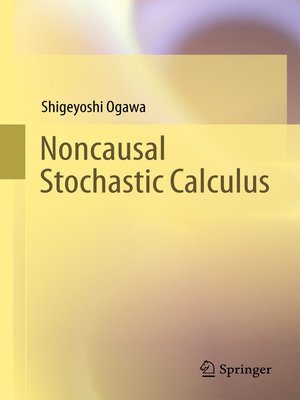
Sign up to save your library
With an OverDrive account, you can save your favorite libraries for at-a-glance information about availability. Find out more about OverDrive accounts.
Find this title in Libby, the library reading app by OverDrive.



Search for a digital library with this title
Title found at these libraries:
| Library Name | Distance |
|---|---|
| Loading... |
This book presents an elementary introduction to the theory of noncausal stochastic calculus that arises as a natural alternative to the standard theory of stochastic calculus founded in 1944 by Professor Kiyoshi Itô. As is generally known, Itô Calculus is essentially based on the "hypothesis of causality", asking random functions to be adapted to a natural filtration generated by Brownian motion or more generally by square integrable martingale.
The intention in this book is to establish a stochastic calculus that is free from this "hypothesis of causality". To be more precise, a noncausal theory of stochastic calculus is developed in this book, based on the noncausal integral introduced by the author in 1979.
After studying basic properties of the noncausal stochastic integral, various concrete problems of noncausal nature are considered, mostly concerning stochastic functional equations such as SDE, SIE, SPDE, and others, to show not only the necessity of such theory of noncausal stochastic calculus but also its growing possibility as a tool for modeling and analysis in every domain of mathematical sciences. The reader may find there many open problems as well.
The intention in this book is to establish a stochastic calculus that is free from this "hypothesis of causality". To be more precise, a noncausal theory of stochastic calculus is developed in this book, based on the noncausal integral introduced by the author in 1979.
After studying basic properties of the noncausal stochastic integral, various concrete problems of noncausal nature are considered, mostly concerning stochastic functional equations such as SDE, SIE, SPDE, and others, to show not only the necessity of such theory of noncausal stochastic calculus but also its growing possibility as a tool for modeling and analysis in every domain of mathematical sciences. The reader may find there many open problems as well.







